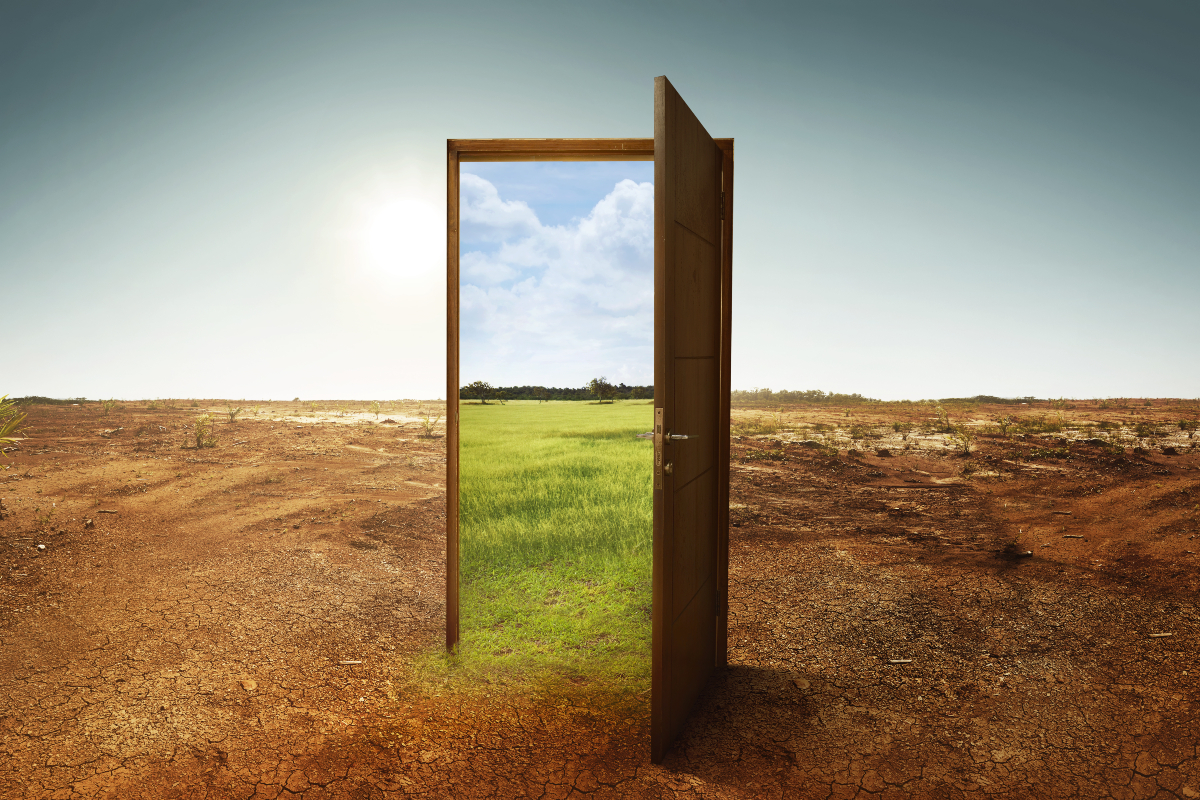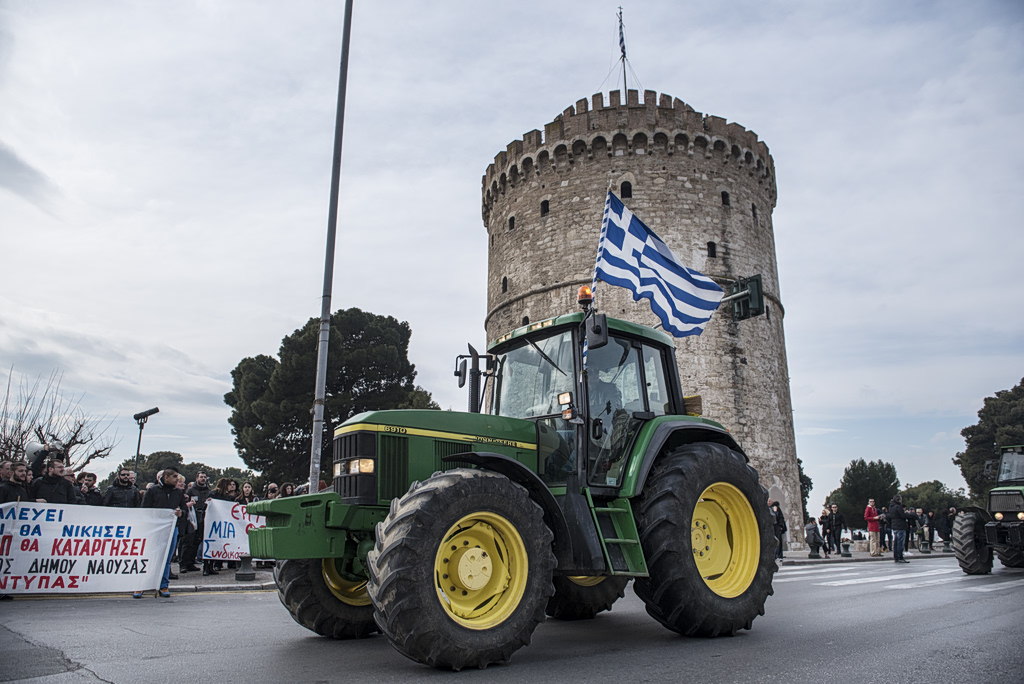Joe Shaw makes his salads with a light dressing of balsamic vinegar, lemon juice and olive oil. At least he used to.
The price of olive oil has doubled over the past two years as hot weather and drought have baked olive groves around the Mediterranean. Shaw decided it didn’t make sense to pay $10 for a half-liter bottle, up from about half that one or two years ago. He now squeezes the lemon juice and drizzles the vinegar, but with nothing to balance the acidic mixture.
“It does feel a little apocalyptic,” said the 28-year-old, who works as an exhibition assistant for an art gallery in London. “You remember the days when you could have olive oil.”
As the world warms, extreme weather is disrupting the production of some of life’s great comforts—wine, olive oil, coffee and cocoa. Some of these crops are concentrated in one or two regions, which means wonky weather in one part of the world can have a dizzying impact on global prices.
Heat waves and untimely rain in West Africa have sent cocoa prices to record levels this year, causing chocolate makers to raise prices. Traders are hoarding coffee after a severe drought in Vietnam, the world’s second-largest producer, pushing prices of the Robusta variety to a 45-year high. The more-coveted Arabica beans have also recently become costlier.
In Italy, heavy rain caused a surge in grape-devouring mildew—one of a number of severe weather events that sank global wine production to its lowest levels since 1961.
Higher prices ultimately filter down. Francesco Mazzei, an Italian chef who runs a restaurant at Corinthia Palace, a luxury hotel on the central Mediterranean island nation of Malta, says the trick is knowing which dishes can be made with olive-oil alternatives—like pasta Bolognese, to which he adds richness with pancetta, a type of pork. But for a caprese salad, he said, there is no good Plan B.
“You have to use extra virgin olive oil, you cannot put avocado oil or something like that,” Mazzei said. “It’s one of the flavors of life, the taste would change completely.”
Around the world, regions famed for their culinary delicacies are struggling to adapt. Land suitable for growing coffee, which thrives in cool, higher-elevation stretches, will decline over the coming decades, scientific studies show.
Just try getting a cup of java from the Indonesian island of Java. Dandy Dharmawan, who buys coffee from farmers in the Southeast Asian country and processes the beans for high-end cafes in Indonesia and abroad, says worsening yields have pushed up prices by 50% over the past three years.
“There’s going to be a point where coffee prices will keep rising and coffee drinkers will be pushed toward substitute products that are more affordable,” Dharmawan said.
In India, coffee grower Nishant Gurjer has been hit by a double whammy. First came unusually heavy rains last year that split the outer skins of his coffee beans, hurting the flavor of his early-year harvest. Then came an overpowering heat wave in April that withered new coffee flowers, which he says will lower next year’s production by a quarter.
“Events are getting more intense,” said Gurjer, whose family has been growing coffee for more than 200 years. “The summers are getting hotter, the monsoons are getting wetter.”
Scientists say climate change makes heat waves more common—and more acute.
Coffee traders in drought-hit Vietnam are hoarding beans, holding out for even higher rates, said Debbie Wei Mullin, chief executive of Los Angeles-based Copper Cow Coffee, which sells coffee beans from Vietnam to retail chains like Whole Foods, Costco and Target.
“It used to feel like an unlimited supply in Vietnam,” Mullin said. “This is the first year where we just told Costco, you can have eight truckloads, and that’s it.”
Farmers around the world are trying to adapt by installing irrigation systems to combat drought and planting new drought-resistant versions of crops. In the French wine region of Bordeaux, some growers are rethinking old traditions like thinning vine leaves to increase sun exposure, opting instead to keep grapes shaded and cooler. Higher temperatures make wines taste sweeter, so in recent years the region has authorized mixing in new grapes, like Arinarnoa, an acidic variety that balances out plummy Merlot.
Adaptations like these help but can sometimes cause other problems, said Cornelis van Leeuwen, a professor of viticulture at Bordeaux Sciences Agro. To combat drought, for instance, farmers in Spain are using irrigation but that risks draining scarce aquifers. Another solution is less dense planting, so each vine has more soil to extract water from. But fewer vines means fewer grapes, which can hit farmers’ revenue.
Other wine regions have it even harder than Bordeaux. In March, van Leeuwen co-wrote a paper in an academic journal called Nature Reviews Earth & Environment that found that some hotter, dryer wine-growing areas in southern Europe had reached a breaking point, with “stunted vines, defoliated canopies, and severe yield losses.”
That has inspired some winemakers to venture north in search of milder weather. K Felix G Åhrberg worked in wineries in New Zealand, France, South Africa and elsewhere, getting a taste of how climate change was affecting global production. In 2017, he decided to get “ahead of the game,” he said, and return home to Sweden. He now works with grapes grown a couple of hours’ drive from Gothenburg in the south of the country.
“They are ripping up vineyards in Spain, in France and Italy,” said Åhrberg. “It’s burning in Bordeaux and hailing in Italy.”
The vineyard where he serves as winemaker, Kullabergs Vingård, is in the process of doubling its growing area to around 70 acres.
Over time, expanding wineries in northern countries such as Canada, the U.K. and Sweden are expected to partially compensate for diminished production in powerhouses like Spain, though certain characteristics of the wine may be different.
Olives, a classically Mediterranean crop, are also beginning a slow march northward. Agro Rebels, an Austrian research group, is working with local farmers who have planted around 5,000 olive trees so far. Olives aren’t a customary crop for Austrian farmers, said Daniel Rössler, the group’s co-founder, but opportunity beckons. Austria’s warming climate is beginning to resemble that typical of its neighbors on the other side of the Alps.
Still, it will take time for global consumers to benefit from new olive-oil supply. Olive trees, like coffee and cocoa trees, take years to reach maturity, so production can’t be brought online overnight. Olives need to be processed at specialized mills, which Austria doesn’t yet have.
Meanwhile, olive oil will be more expensive—and potentially less tasty. German consumer group Stiftung Warentest said in March it had tested 23 different olive oils and found that the average quality had dropped compared with previous studies.
“Droughts and heat in Mediterranean countries leave their mark,” it said. “Products of the highest quality—extra virgin—often taste rancid or pungent.”
Write to Jon Emont at jonathan.emont@wsj.com



